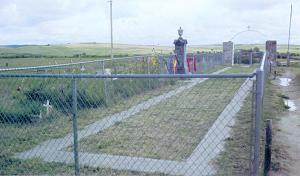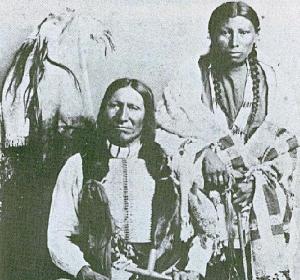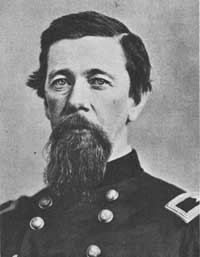Wounded Knee Battleground, South Dakota

Wounded Knee, South Dakota, represents the last significant clash between American Indians and U.S. troops in North America.
Following the introduction of the Ghost Dance among the Lakota Sioux and the killing of Sitting Bull (December 15, 1890), a Miniconjou band of Sioux led by Big Foot fled the reservation. Finally stopped by U.S. troops, they surrendered. The surrender turned into tragedy when shooting erupted.
Then began a virtual massacre of Big Foot’s band on December 29, 1890. Situated on the Pine Ridge Indian Reservation, Wounded Knee Battleground is open to the public. There are markers, and nearby is the cemetery with the mass grave of the Indians who died that day. Casualties: U.S. 25 killed, 35 wounded; Indians 128 killed, 33 wounded.
Slim Buttes, South Dakota

Following the Little Bighorn debacle, Generals Alfred Terry and George Crook took up an unsuccessful summer chase of the Sioux.
As the campaign continued into fall, Gen. Crook’s column found itself out of supplies. Unexpectedly, as part of the column under Capt. Anson Mills was attempting to reach the Black Hills to find supplies, the command stumbled onto the Sioux village of American Horse.
On the evening of September 8, 1876, near the present town of Reva, South Dakota, Mills’s Third Cavalry troopers surrounded the village and attacked it the next morning. Taken by surprise, the village was destroyed and American Horse killed. Other assaults during the fall and winter convinced most of the Sioux and Cheyenne of the futility of fighting the soldiers. The site is on private land.
Indian Wars Of The Old West:
North Dakota
Killdeer Mountain, North Dakota

Brig. Gen Alfred Sully
The Battle of Killdeer Mountain, fought on July 28, 1864 in western North Dakota, was an outgrowth to the 1862 Sioux discontent in Minnesota.
Leading more than 3,000 volunteers, Brig. Gen. Alfred Sully confronted more than 1,600 Sioux in the North Dakota badlands, representing one of the largest pitched battles in the history of Plains warfare. Sully’s force approached the Indian encampment dismounted in a large square.
The soldiers easily deflected the Sioux charges and drove the warriors from the field. Although casualties were few, Sully was able to destroy vast quantities of Indian stores. Killdeer Mountain Battlefield is operated by the North Dakota State Parks.
Native American History Related Articles
- Indian Wars Of The Old West: Arizona, Part 1
- Indian Wars Of The Old West: Arizona, Part 2
- Indian Wars Of The Old West: Arizona, Part 3
- Indian Wars Of The Old West: Colorado, Part 1
- Indian Wars Of The Old West: Colorado, Part 2
- Indian Wars Of The Old West: Montana, Part 1
- Indian Wars Of The Old West: Montana, Part 2
- Indian Wars Of The Old West: South Dakota
- Indian Wars Of The Old West: Texas
- Indian Wars Of The Old West: Wyoming

